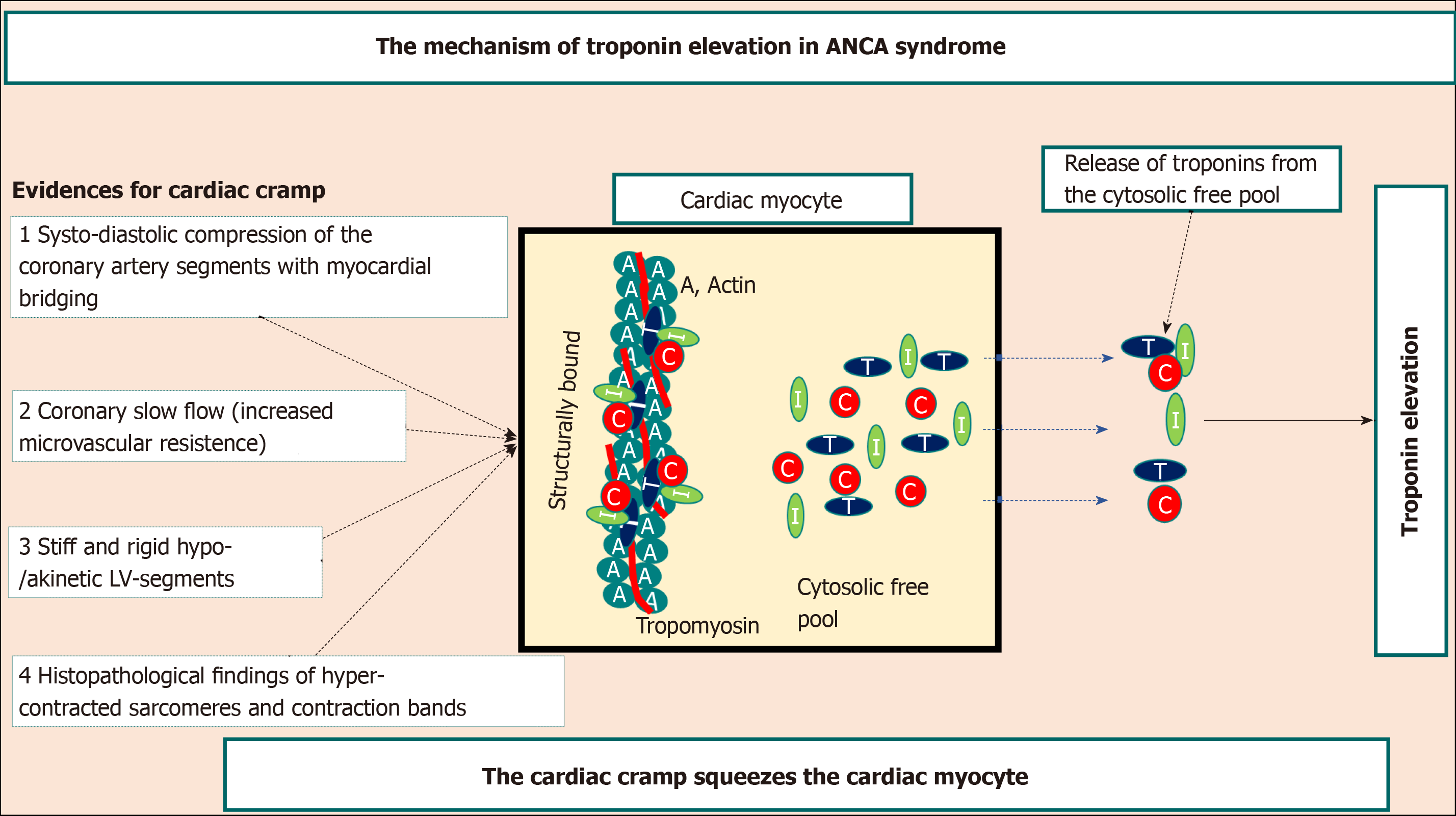Copyright
©The Author(s) 2020.
World J Cardiol. Jun 26, 2020; 12(6): 231-247
Published online Jun 26, 2020. doi: 10.4330/wjc.v12.i6.231
Published online Jun 26, 2020. doi: 10.4330/wjc.v12.i6.231
Figure 4 Mechanism of troponin elevation in autonomic neurocardiogenic syndrome.
Illustration of the hypothetical mechanism of troponin release in autonomic neurocardiogenic syndrome including takotsubo syndrome and takotsubo-related conditions. The systo-diastolic compression of a coronary artery segment specially left anterior descending artery with myocardial bridging, the coronary slow flow due to increased microvascular resistance, the stiff and rigid myocardial stunning, and the hyper-contracted sarcomeres indicate that the affected myocardium in autonomic neurocardiogenic syndrome including takotsubo syndrome is in a state of cardiac cramp. This cardiac cramp may squeeze the cardiac myocyte causing release of troponins from the cytosolic free pool resulting in mild-moderate troponin elevation as demonstrated in the figure. C: Troponin C; I: Troponin I; T: Troponin T; ANCA: Autonomic neurocardiogenic.
- Citation: Y-Hassan S. Autonomic neurocardiogenic syndrome is stonewalled by the universal definition of myocardial infarction. World J Cardiol 2020; 12(6): 231-247
- URL: https://www.wjgnet.com/1949-8462/full/v12/i6/231.htm
- DOI: https://dx.doi.org/10.4330/wjc.v12.i6.231









